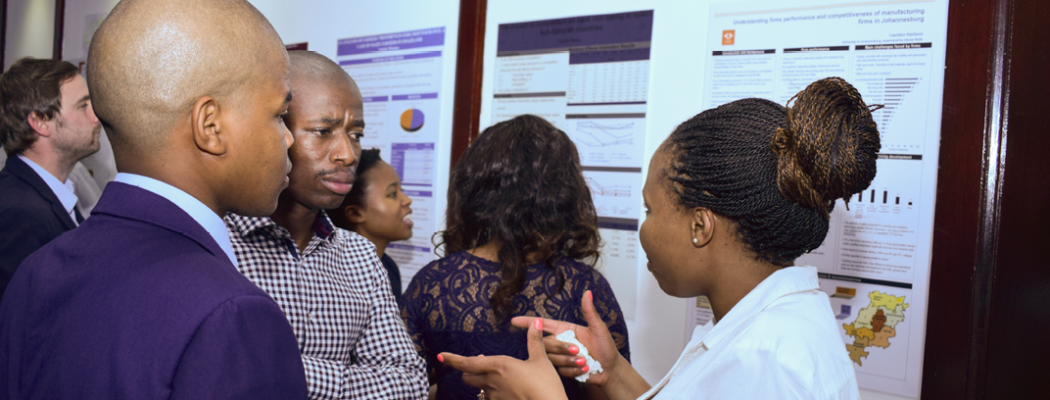The gender wage gap in post-apartheid South Africa
Download SA-TIED Research Brief 2019/2: The gender wage gap in post-apartheid South Africa
The World Bank reports that the world loses US$160 trillion in human capital wealth due to gender wage inequality every year. Inequality is not just an issue of fairness. Inequality is also undesirable because it hampers poverty reduction strategies and leads to suboptimal allocation of resources. In South Africa, where labour market income makes up more than 85% of total household income, it is reported that individuals living in female-headed households are more likely to be poor compared with individuals living in male-headed households.
South Africa has experienced a decline of the gender wage gap from about 40% in 1993 to about 16% in 2014
Most of this decline is from a substantial narrowing of the gender wage gap among the lowest earners below the 10th percentile
There has not been much change in the gender wage gap at the median
At the 90th percentile, there was a decline in the gender gap between 1993–2005, but this trend has reversed exhibiting a continually increasing unexplained gap in recent years
South Africa has experienced a decline of the gender wage gap at the mean from about 40% in 1993 to about 16% in 2014. However, the gap declined only until 2007 and was stagnant thereafter, oscillating at 16%. Examination of the long-run trend of the gender wage gap across the wage distribution shows that there has been a substantial decline in the gender wage gap at the 10th percentile. On the other hand, there has not been much change in the gender wage gap at the median. At the 90th percentile, there was a decline in the gender gap between 1993–2005, but this trend has reversed exhibiting a continually increasing unexplained gap in recent years.
The wage gap in the South African labour market exhibits a ‘sticky floor’ effect — a pattern that keeps a certain group at the bottom of the job scale, with the bottom decile of earners having the highest proportion of female workers. The gender wage gap is also highest at the top 10th percentile, which reflects the fact that South African women rarely occupy the highest-paying positions in the economy.The gender wage gap in South Africa
This study adds to the evidence by showing that since 2007, South Africa has also exhibited an increasing glass ceiling effect, reflected by the large increase of the gender wage gap at the 90th percentile. It is important to unpack these changes in the gender wage gap in the context of labour market changes and wage structure explanations for the narrowing of the gender wage gap.
Labour force participation and employment
Women have made great strides in labour force participation. In 1993, 44.5% of women in South Africa were working; a number that rose to 48.9% by 2018. Proponents of human capital theory credit the decline of the gender wage gap over time in different countries to the continued labour force participation of women.
Returns to human capital characteristics
Employed women in South Africa have, on average, an advantage in years of schooling. Additionally, women are less likely to drop out of secondary school, are more likely to have some tertiary education, and are just as likely or more likely to have a university degree. What these trends tell us is that the post-apartheid government has been successful in improving the human capital characteristics of women.
Collective bargaining and minimum wage legislation
In South Africa, the effect of the minimum wage legislation for low-income earners — including contract cleaners, domestic workers, and agricultural workers — has been to raise the earnings of these groups (which are mostly comprised of women); this may have been an important contributor to the narrowing of the gender wage gap at the bottom end of the wage distribution
Equal pay legislation, employment equity legislation, and affirmative action
South Africa enacted the Employment Equity Act in 1998 and it led to the enforcement of affirmative action. Employment trends over time show that there has been an increase of women in occupations where they were formerly under-represented. For example, the proportion of female managers almost doubled in the period 1993–2014. Also, the decline of the unexplained gap at the 90th percentile and the mean is an indication that affirmative action may have had an impact on the gender wage gap.
The stagnation of the median wage gap, however, raises the question of whether affirmative action has had any impact. The results show that occupation of employment contributes positively to the unexplained gap at the 90th percentile. This means that there is a ceiling for highly-qualified women, restricting them from participating in the highest-paid positions in the economy, even though women are more highly educated than men overall.
The forgotten middle
Efforts towards narrowing the gender wage gap will need to be specific to the challenges faced by women in different parts of the wage distribution
While raising the minimum wage at the bottom of the wage distribution might narrow the gender wage gap in this part of the distribution, efforts to narrow the gender wage gap at the top end of the distribution should focus on increasing the number of women in top-paying occupations.
Narrowing the gender wage gap will require alleviating the disproportionate burden of care work shouldered by women, to enable them to commit more time to the labour market.
With minimum wage legislation helping boost wages in the bottom part of the distribution, and industry’s demand for university-educated individuals raising wages at the top end of the distribution, it seems that the median worker has been mainly forgotten with similar implications for the median gender wage gap. In sum, the size of and reasons for the gender wage gap are heterogeneous across the wage distribution in the South African labour market. The experience of women at the top end of the wage distribution is different from that of women at the bottom or at the median.
The policy implication here is that efforts towards narrowing the gender wage gap will need to be specific to the challenges faced by women in different parts of the wage distribution. For example, while raising the minimum wage at the bottom of the wage distribution might narrow the gender wage gap in this part of the distribution, efforts to narrow the gender wage gap at the top end of the distribution should focus on increasing the number of women in top-paying occupations. This will require, among other things, alleviating the disproportionate burden of care work shouldered by women, to enable them to commit more time advancing their careers in the labour market (for example, by making childcare more affordable and accessible).






